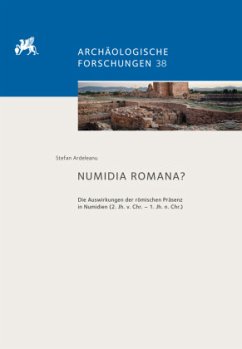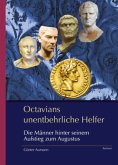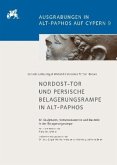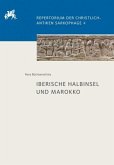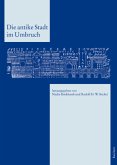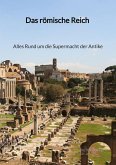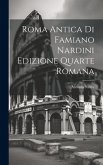The complex phenomena surrounding the incorporation of Numidia into Rome's sphere of control has been discussed to date predominantly on the basis of bipolar models such as Punicization, Romanization, resistance theory or autochthonology. As an alternative this study, which draws on the author's own field research and is illustrated by six microregions, delineates the panorama of an extraordinarily early development of urban centers in Numidia, visualizing it with new diachronic phase plans. Referring to selected dwelling and workshop areas, sanctuaries and burial practice, the study identifies specific local and regional characteristics, some of which persisted into the imperial period. At the same time novelties appeared in cultic, mortuary, ceramic and architectural forms which cannot be explained either by the resistance of local groups or by the arrival of new groups, for instance Roman citizens. The complex ornamental and formal vocabulary of buildings and objects in addition to certain evidence of economy (marble imports and exports, ceramic imitations, coin distribution) prove that the towns of Numidia were perfectly integrated in Mediterranean trade networks and cultural transfer processes from the 2nd century B.C. onward. Close ties existed in particular with central Italy and led to mutual influence on politics and territory long before Numidia's annexation (46 B.C.). Heterogeneous find contexts, distribution mechanisms and inscriptions show however that considerably more actors were involved in this exchange than - as assumed thus far - just the kings of Numidia and the Republican commanders and later the emperors. The common presumption of North Africa's so-called dark age is thus confronted with a wealth of new excavation and survey data as well as a re-evaluation of recent and older research results. New explanatory models are thereby presented for this decisive phase in North Africa's urban development and for the identity discourses of that period.
"The book could be seen as merely a bundle of congress papers, but it has more to offer: it shows an appealing power to think off the beaten track of research and offers a multitude of new insights that can stimulate further research. It is therefore a must-have for those who are engaged in the study of the Roman house."
Von Richard de Kind
In: BABESCH 97 (2022), S. 255-256, doi: 10.2143/BAB.97.0.3290542
-----------------------------------------------------------------------------------------------------------------------------------------------
"Even before one has read any of the contents, one will be suitably impressed by this monograph: a hardcover folio-sized volume weighing a hefty three kilograms, almost 600 double-column pages on glossy paper, with 4430 footnotes, and many illustrations and maps. (...) This is an incredibly wide-ranging book, considering it is a monograph with single authorship. But as already stated: though wide-ranging it is not a general history of Numidia or a general guide to the many Roman remains, it has a purpose, namely to say something about cultural change and its driving forces. This is a study that is obviously of importance to anybody interested in the development of Numidia (or all of Northern Africa, or the whole circum-Mediterranean) between Hellenistic and early imperial days. But it is also an impressiv contribution to the study of the mechanisms and modalities of culture contact and culture change."
By Frederick G. Naerebout
In: BABESCH 97 (2022), S. 242-244, doi: 10.2143/BAB.97.0.3290542
-----------------------------------------------------------------------------------------------------------------------------------------------
"[...] in showing what is possible when moving beyond those problematic colonial conceptual categories that have shaped interpretations of archaeological finds across Numidia, Ardeleanu offers one of the first truly postcolonial paths forward for NorthAfrican studies. One can only hope that this monumental work will begin to shift the discourse for all who work in the region and serve as a model starting point for subsequent material histories of Rome's African provinces."
Von Matthew M. McCarty
In: American Journal of Archeology, Vol. 127, Nr. 1, 2023
Von Richard de Kind
In: BABESCH 97 (2022), S. 255-256, doi: 10.2143/BAB.97.0.3290542
-----------------------------------------------------------------------------------------------------------------------------------------------
"Even before one has read any of the contents, one will be suitably impressed by this monograph: a hardcover folio-sized volume weighing a hefty three kilograms, almost 600 double-column pages on glossy paper, with 4430 footnotes, and many illustrations and maps. (...) This is an incredibly wide-ranging book, considering it is a monograph with single authorship. But as already stated: though wide-ranging it is not a general history of Numidia or a general guide to the many Roman remains, it has a purpose, namely to say something about cultural change and its driving forces. This is a study that is obviously of importance to anybody interested in the development of Numidia (or all of Northern Africa, or the whole circum-Mediterranean) between Hellenistic and early imperial days. But it is also an impressiv contribution to the study of the mechanisms and modalities of culture contact and culture change."
By Frederick G. Naerebout
In: BABESCH 97 (2022), S. 242-244, doi: 10.2143/BAB.97.0.3290542
-----------------------------------------------------------------------------------------------------------------------------------------------
"[...] in showing what is possible when moving beyond those problematic colonial conceptual categories that have shaped interpretations of archaeological finds across Numidia, Ardeleanu offers one of the first truly postcolonial paths forward for NorthAfrican studies. One can only hope that this monumental work will begin to shift the discourse for all who work in the region and serve as a model starting point for subsequent material histories of Rome's African provinces."
Von Matthew M. McCarty
In: American Journal of Archeology, Vol. 127, Nr. 1, 2023

